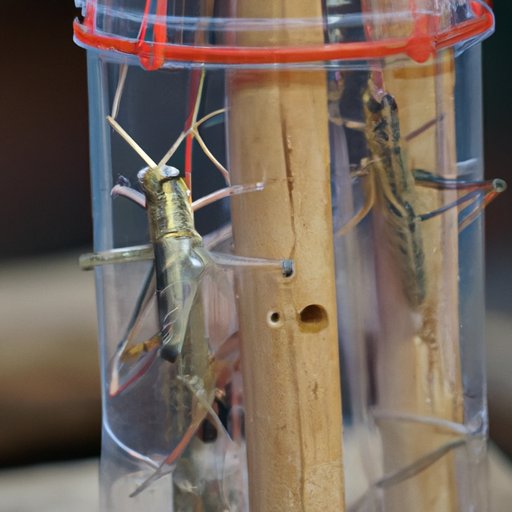
I. Introduction
Grasshoppers can be a nuisance in gardens or yards, causing damage to plants and leaving homeowners frustrated. These insects are known for their ability to hop long distances and can quickly overrun gardens, causing significant damage in just a few days. In this article, we will explore natural and chemical methods for getting rid of grasshoppers and provide tips on how to prevent future infestations.
II. Natural solutions for getting rid of grasshoppers
Companion planting is an effective natural approach that involves planting specific herbs, vegetables, and flowers that can help repel grasshoppers. Plants that have strong scents, such as mint, garlic, and onion, can be used to deter these pests. Marigolds, calendula, and petunias are other plants that can be beneficial in the garden, as they attract beneficial insects that prey on grasshoppers.
Physical barriers are another natural solution for preventing grasshoppers from accessing plants. Use row covers or mesh netting to protect plants, or construct mesh cages around individual plants. Be sure to seal any gaps or entry points where grasshoppers may be able to slip through. Some homeowners have even had success using paper collars around the base of plants to create a barrier.
Essential oils such as neem oil, rosemary oil, and peppermint oil can be used to deter grasshoppers. Mix two teaspoons of your oil of choice with a few drops of dish soap and a quart of water in a spray bottle. Spray the mixture on plants (avoiding the blooms), and reapply every few days or after a rainfall.
III. Chemical insecticides for getting rid of grasshoppers
While natural methods can be effective, chemical insecticides may be necessary for severe infestations. Insecticides containing pyrethrins and neonicotinoids are commonly used to kill grasshoppers. These chemicals can be found in sprays, baits, and dusts and should be applied according to the manufacturer’s instructions.
It is important to note that chemical insecticides can harm beneficial insects and wildlife, so it is recommended to use them sparingly and as a last resort.
When handling chemicals, always wear gloves, protective clothing, and a mask to avoid exposure to the toxic substance. Follow all safety instructions on the product label and store chemicals in a secure location away from children and pets.
IV. Biological control methods for grasshoppers
Biological control is an eco-friendly approach that involves introducing natural predators and pathogens that can help eliminate grasshoppers. Ladybugs, lacewings, and praying mantises are beneficial insects that can prey on grasshoppers in the garden. Nematodes, tiny worms that live in the soil, can also help control grasshoppers by attacking their larvae.
Chickens, guinea fowl, and ducks are other natural predators that can be effective in controlling grasshoppers. These birds will eagerly eat grasshoppers, helping to reduce their numbers in your yard or garden.
V. DIY grasshopper traps
DIY traps can be an effective way to control grasshoppers. To make a simple trap, bury a mason jar or can halfway into the soil in an area where you’ve seen grasshoppers. Fill the container with a mixture of water and dish soap, which will attract and drown the insects. Be sure to empty the trap regularly and refill with fresh water and dish soap.
A similar trap can be made using a bucket or large container. Fill with water and add a small amount of dish soap. Place a ramp leading up to the container and cover the surface with a layer of vegetable oil. The grasshoppers will be attracted to the oil, fall in the water, and drown.
VI. Mechanical methods for controlling grasshoppers
Using nets or barriers can be an effective way to keep grasshoppers away from plants. Cover the plants with a finely meshed netting, which will prevent the insects from accessing them. Alternatively, create a barrier around the perimeter of the garden using chicken wire or mesh netting. Be sure to bury the netting or wire into the soil to prevent grasshoppers from sneaking underneath.
VII. Combining methods to get rid of grasshoppers
Combining different methods can be an effective way to control grasshoppers and prevent future infestations. Consider using a natural approach, such as companion planting or essential oils, in combination with DIY traps or mechanical barriers. This approach, known as integrated pest management, can be effective in reducing the number of grasshoppers in your garden or yard without relying on chemical insecticides.
VIII. Conclusion
Grasshoppers can be a serious nuisance in gardens or yards, causing significant damage to plants and leaving homeowners frustrated. Fortunately, there are many natural and chemical methods for getting rid of these pests. By using the tips outlined in this article and taking action to control grasshoppers, you can enjoy a beautiful, healthy garden or yard all season long.





